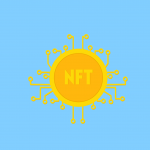Introduction
As the world of technology continues to expand, so too does the need to remain vigilant against potential scams. Web 3.0 is a new wave of the internet that promises to revolutionize the way we interact with the world around us. With the rise of this new technology, however, come potential risks that are important to be aware of. In this blog post, we’ll discuss three of the most common scams that could be encountered in Web 3.0, as well as how to avoid them.
Phishing
Phishing scams are one of the most common types of scams that can be encountered in Web 3.0. These scams typically involve attackers masquerading as a legitimate source in order to gain access to confidential information. It is important to remain vigilant when receiving emails or other messages from unknown sources, as they could be malicious. To avoid becoming a victim of a phishing scam, it is important to never provide confidential information to an unknown source and to always double-check the sender of any messages.
Ponzi Schemes
Ponzi schemes are another common type of scam that is prevalent in Web 3.0. These schemes typically involve promising investors high returns on their investments, only to take the money and never provide the promised returns. It is important to always do thorough research before investing in any venture, as Ponzi schemes can be hard to detect. One way to avoid becoming a victim of a Ponzi scheme is to only invest with reputable companies that have a long track record of success.
Malware
Malware is a type of malicious software that can be used to steal personal information or disrupt computer systems. It is important to always keep your computer’s antivirus software up to date, as this can help protect against malicious attacks. Additionally, it is important to never open emails or downloads from unknown sources, as these could contain malicious code.
Conclusion
The internet is an ever-changing landscape and staying ahead of potential scams is an important part of staying safe online. By understanding the three most common types of scams that could be encountered in Web 3.0, as well as how to avoid them, you can protect yourself and others from becoming victims of malicious attacks. With the right knowledge and precautions, Web 3.0 can be an enjoyable and secure experience.








